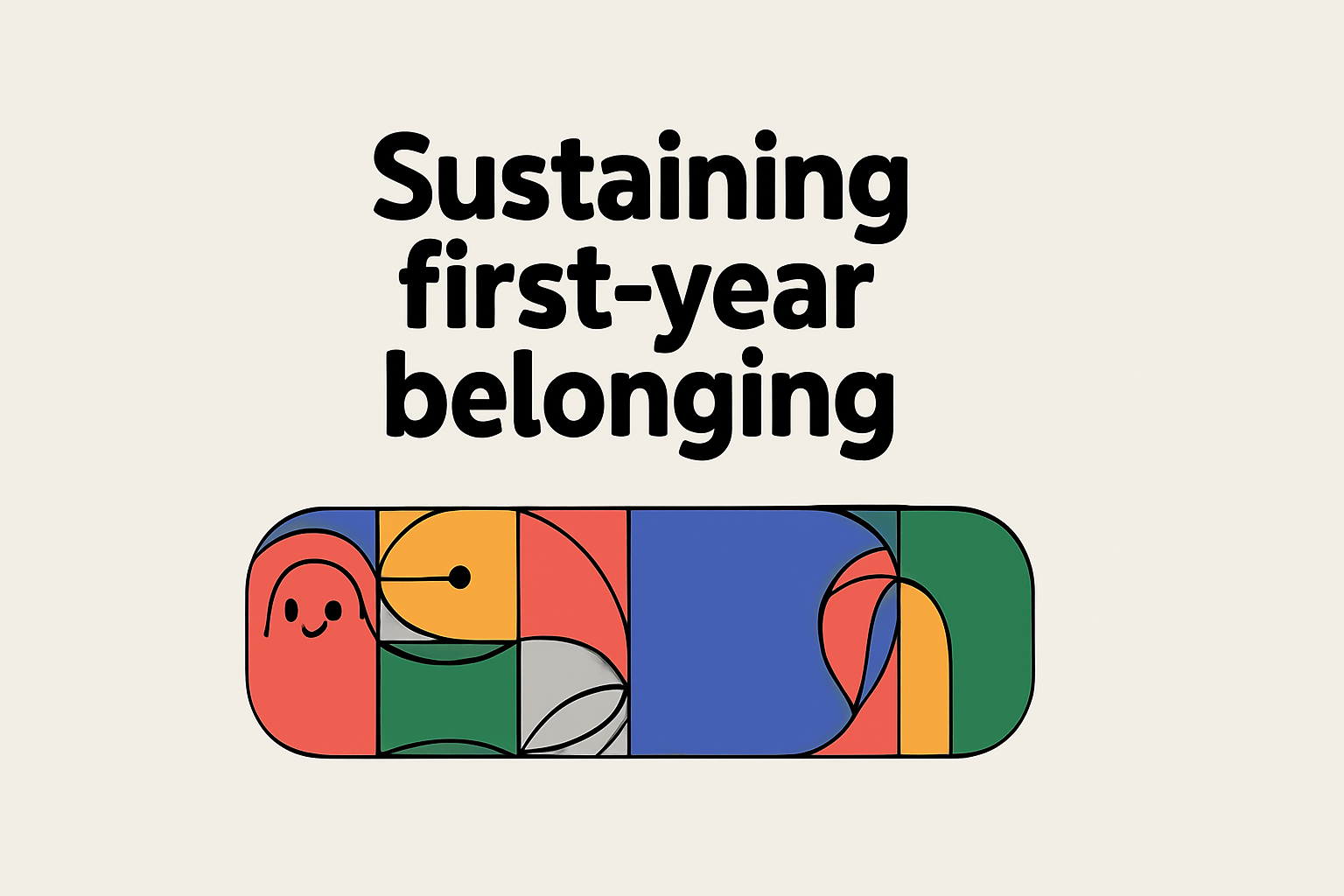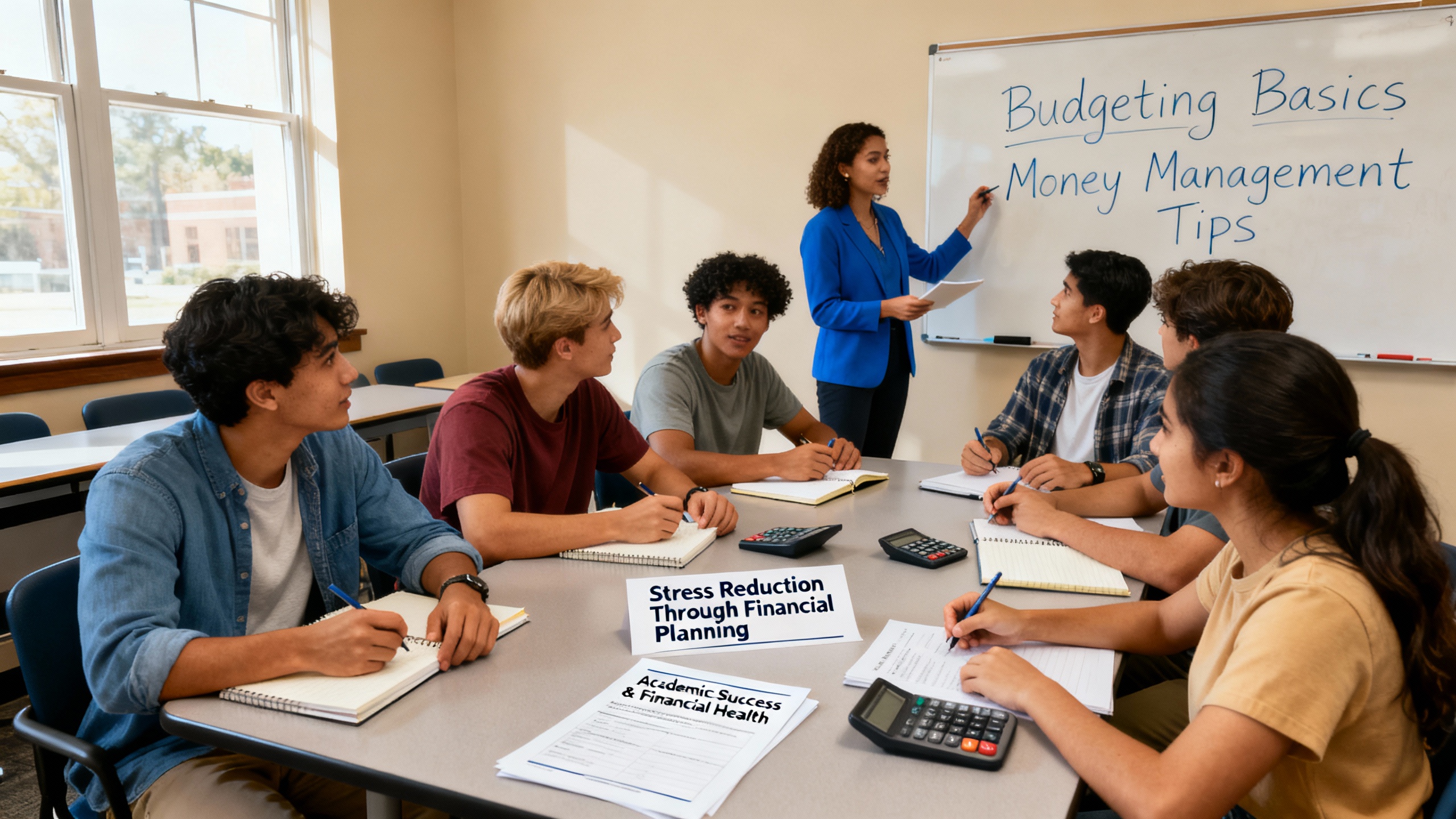Featured Snippet
First-year experience continuity involves maintaining student engagement and belonging throughout the entire academic year, not just during orientation week. Successful programs combine peer mentorship, extended orientation activities, regular check-ins, and technology-enhanced engagement to combat the "post-orientation fade" that occurs by mid-term, ultimately improving retention rates by up to 25%.
First-Year Retention Strategies
The excitement is palpable during orientation week. First-year students arrive on campus with energy and optimism, ready to embrace their college experience. They participate in icebreakers, attend welcome events, and connect with peers. But what happens when the banners come down and the welcome committees disperse? For too many students, the sense of belonging cultivated during orientation begins to fade by mid-term, creating what researchers call the "post-orientation fade"—a critical risk factor for student attrition.
The Hidden Crisis: When Connection Drops After Week One
The statistics paint a concerning picture. In many cases, 1 in 3 first-year students or more won't make it back for their second year, with loneliness and lack of connection cited as primary factors [1]. The decline in engagement after orientation creates a vulnerable period when students are most likely to consider leaving.
This engagement cliff isn't just about missing social events. When students disconnect from campus life, they're less likely to seek academic help, utilize mental health resources, or build the peer networks that research shows are essential for persistence. Whether a student departs from an institution is largely a result of the extent to which the student develops a strong sense of belonging and integration within the community [2].
The "murky middle" phenomenon compounds these challenges. The "murky middle" refers to students midway through their academic careers (30–90 credits) with GPAs between 2.0 and 3.0, and these students often persist at lower rates but are frequently overlooked by student success teams [3].
Why Traditional Orientation Falls Short
Most universities invest heavily in orientation programming, yet these efforts typically concentrate all resources into a single week or two. While initial orientation serves its purpose of introducing students to campus, it creates several unintended consequences:
Information Overload: According to Ebbinghaus's forgetting curve research, humans forget 50% of new information within an hour of learning it and an average of 90% of new information is forgotten within the first seven days [4]. This rapid memory decline means that the wealth of information provided during orientation week—from academic policies to campus resources—is largely lost without reinforcement.
False Peak: The intensity of orientation week sets an unrealistic expectation for ongoing campus engagement, leaving students feeling isolated when regular semester routines set in.
One-Size-Fits-All Approach: Traditional orientations often fail to account for diverse student needs, particularly for commuter students, transfers, and first-generation college students who may need different types of ongoing support.
Building Bridges: Extended Orientation Models That Work
The most effective FYE programs are not just a single course or event [5]. Leading institutions are reimagining first-year retention strategies as a year-long journey rather than a week-long event.
Structured Peer Mentorship Programs
Peer mentorship has emerged as one of the most powerful tools for sustaining belonging throughout the first year. At Utrecht University's Medical School, first-year students are assigned a peer-mentor who guides them through the orientation period, including social activities as well as academic guidance for the first few weeks of university [6].
The most successful programs extend far beyond initial meetings. Texas State's Peer Mentors are upper-level students who provide continued positive peer support to help students transition to Texas State socially and academically, with their program earning national recognition for delivering top-tier student support [7].
Research confirms these approaches work. Studies show that effective peer mentorship programs can significantly improve retention, with some institutions reporting retention rates as high as 91% when comprehensive support systems are in place [8].
First-Year Seminars and Learning Communities
First-year seminars create structured touchpoints throughout the semester, providing ongoing opportunities for connection and skill-building. Sparked by the work of the National Resource Center for the First Year Experience and Students in Transition and by its founder, John Gardner, institutions throughout the country have implemented comprehensive first year experience initiatives [2].
These seminars work best when they're credit-bearing and integrated into students' academic pathways, ensuring consistent participation. They provide a home base where students can discuss challenges, celebrate successes, and maintain connections with a consistent peer group.
Strategic Mid-Term Interventions
The mid-term period represents a critical juncture when many students experience their first significant academic challenges. Progressive institutions are implementing targeted "second orientation" events around week 6-8 that:
Reconnect students with campus resources when they actually need them
Facilitate study group formation before major exams
Address the specific stressors that emerge mid-semester
Celebrate early achievements to maintain momentum
Emergency funding programs address this head-on. For example, when a student's laptop breaks mid-semester, a micro-grant can get them a replacement within days, preventing them from falling behind in their coursework [5].
Technology as a Belonging Accelerator
While traditional programming forms the foundation, technology can amplify and sustain these efforts throughout the year. Research indicates that strategic use of educational technology can significantly enhance student engagement when properly implemented.
Smart Nudges and Just-in-Time Support
Rather than overwhelming students with information during orientation, smart campus platforms can deliver resources exactly when students need them. For example, Campus Mind's platform could send personalized nudges about study resources the week before midterms, mental health support during high-stress periods, and social opportunities when engagement metrics indicate isolation.
The concept builds on spaced learning principles, which research shows is crucial for retention. Spaced learning strengthens memory retention because the learner studies the information, and periodically returns to review it in order to retain the knowledge [9].
Gamification and Recognition Systems
Creating ongoing engagement requires making participation rewarding. Gamified platforms that recognize students for attending events, visiting support services, or helping peers can maintain the energy of orientation week throughout the year. These systems work particularly well when they're student-driven rather than administrative, allowing peer recognition and social validation to drive continued participation.
Real-Time Belonging Metrics
Traditional retention efforts often identify at-risk students too late. Modern platforms can track engagement indicators—event attendance, resource utilization, peer connections—in real-time, allowing for proactive interventions before students reach crisis points.
Creating Your Year-Long Belonging Strategy
Building an effective extended orientation program requires intentional design and institutional commitment. Here's how to get started:
Map the First-Year Journey: Identify the key transition points, stress periods, and decision moments throughout the first year. Design interventions that align with these natural rhythms rather than arbitrary calendar dates.
Layer Your Interventions: Combine high-touch personal interactions (peer mentoring, advisor meetings) with scalable digital solutions (mobile apps, automated check-ins) to create multiple pathways for connection.
Measure What Matters: Institutions that implement effective retention strategies are seeing significant improvements in student success rates - some reporting up to 25% better retention year-on-year [8]. Track not just retention rates but leading indicators like event attendance, resource utilization, and peer network formation.
Close the Loop: Use data from each cohort to refine your approach. What worked? What didn't? When did students disengage? Let evidence guide your evolution.
The ROI of Sustained Belonging
Investing in year-long first-year support isn't just good for students—it's good for institutions. Students who feel a strong sense of belonging are more likely to persist in their studies, leading to improved retention rates. Higher retention rates mean a more stable student population, which can have financial advantages, including increased tuition revenue and reduced costs associated with recruitment and marketing efforts [10].
The financial impact is significant. With the average cost of recruiting a new student exceeding $2,500 and lost tuition from attrition affecting institutional budgets, even modest improvements in first-year retention can generate substantial returns. More importantly, supporting student success fulfills the fundamental promise of higher education: helping every student reach their full potential.
Looking Forward: From Orientation to Integration
The future of first-year experience moves beyond discrete orientation events to create continuous, adaptive support systems that evolve with student needs. As one student affairs professional noted, "We need to stop thinking about orientation as an event and start thinking about it as a process—one that takes at least a full year to complete."
The What works? programme showed that effective interventions have an academic purpose relevant to all students and are delivered in the mainstream, facilitating collaboration between students and staff [11]. The most successful interventions are ongoing and part of a comprehensive program featuring regular monitoring and follow-up.
This shift requires reimagining institutional structures, investing in both human and technological resources, and committing to evidence-based approaches that prioritize student belonging as a strategic imperative. The institutions that make this transition successfully won't just improve their retention rates—they'll fundamentally transform the first-year experience for a generation of students who deserve nothing less than our full support from day one through graduation day.
5. Works Cited
[1] US News Rankings — "2025 University Rankings by First-Year Retention Rate." URL: https://www.usnews.com/best-colleges/rankings/national-universities/freshmen-least-most-likely-return. Published: 2025. Accessed: 2025-09-23.
[2] University of Maine System — "Retention and Student Success - Best Practices and Successful Initiatives." URL: https://www.maine.edu/student-success/retention-and-student-success-best-practices-and-successful-initiatives/. Published: 2025. Accessed: 2025-09-23.
[3] EAB — "3 hidden retention challenges facing higher ed in 2025." URL: https://eab.com/resources/blog/student-success-blog/3-hidden-retention-challenges-facing-higher-ed-in-2025/. Published: 2025-03-25. Accessed: 2025-09-23.
[4] Whatfix — "Ebbinghaus's Forgetting Curve: How to Overcome It." URL: https://whatfix.com/blog/ebbinghaus-forgetting-curve/. Published: 2022-01-07. Accessed: 2025-09-23.
[5] Motimatic — "9 Proven Student Retention Strategies for 2025." URL: https://motimatic.com/student-retention-strategies/. Published: 2025-07-15. Accessed: 2025-09-23.
[6] BMC Medical Education — "Peer-mentorship and first-year inclusion: building belonging in higher education." URL: https://pmc.ncbi.nlm.nih.gov/articles/PMC10629167/. Published: 2023. Accessed: 2025-09-23.
[7] Texas State University — "First-Year Peer Mentoring." URL: https://mentoring.studentsuccess.txst.edu/. Published: 2025. Accessed: 2025-09-23.
[8] Verifyed.io — "5 Proven Student Retention Strategies for 2025: Expert Guide." URL: https://www.verifyed.io/blog/student-retention-strategies. Published: 2025. Accessed: 2025-09-23.
[9] LearnUpon — "5 Ways to Challenge the Forgetting Curve." URL: https://www.learnupon.com/blog/ebbinghaus-forgetting-curve/. Published: 2022-04-06. Accessed: 2025-09-23.
[10] Advance HE — "Fostering belonging in higher education: Implications for student retention and wellbeing." URL: https://www.advance-he.ac.uk/news-and-views/fostering-belonging-higher-education-implications-student-retention-and-wellbeing. Published: 2024-03-12. Accessed: 2025-09-23.
[11] Advance HE — "What Works? Student retention and success change programme." URL: https://www.advance-he.ac.uk/guidance/teaching-and-learning/student-retention-and-success/what-works-student-retention-and-success-change-programme. Published: 2025. Accessed: 2025-09-23.




